MQ Multiquip GA-9.7HEA Operating instructions
- Category
- Power generators
- Type
- Operating instructions
This manual is also suitable for

PAGE 2 — GA9.7HEA 60 HZ GENERATOR• OPERATION AND PARTS MANUAL — REV. #1 (09/18/19)
PROPOSITION 65 WARNING

GA9.7HEA 60 HZ GENERATOR • OPERATION AND PARTS MANUAL — REV. #1 (09/18/19) — PAGE 3
TABLE OF CONTENTS
GA-9.7HEA 60 Hz
Portable Generator
Proposition 65 Warning ........................................... 2
Table of Contents ..................................................... 3
Nameplate/Safety Information ................................. 5
Safety Information ............................................. 6–11
Specifications (Generator) ..................................... 12
Specifications (Engine) .......................................... 13
Dimensions ............................................................ 14
Installation ....................................................... 15–16
General Information ............................................... 17
Components (Generator) ................................. 18–20
Inspection/Setup .............................................. 21–24
Operation ......................................................... 25–28
Preparation for Long Term Storage ....................... 29
Maintenance .................................................... 30–36
Gen. Wiring Digram (S/N 5681188 and Below) ..... 38
Gen. Wiring Digram (S/N 5681189 and Above) ..... 39
Troubleshooting (Engine) ................................. 40–41
Troubleshooting (Generator) .................................. 42
Explanation of Code in Remarks Column.............. 44
Suggested Spare Parts ......................................... 45
Component Drawings
Nameplate and Decals Assembly .................... 46–47
Generator Pipe Frame Assembly .................... 48–49
Control Box Assy. (S/N 5681188 and Below) .. 50–51
Control Box Assy. (S/N 5681189 and Above) .. 52–53
Pipe Frame Assembly ...................................... 54–55
Battery Assembly............................................. 56–57
Engine Service Parts ....................................... 58–59
NOTICE
Specifications and part numbers are subject to change
without notice.

PAGE 4 — GA9.7HEA 60 HZ GENERATOR• OPERATION AND PARTS MANUAL — REV. #1 (09/18/19)
NOTES

GA9.7HEA 60 HZ GENERATOR • OPERATION AND PARTS MANUAL — REV. #1 (09/18/19) — PAGE 5
NAMEPLATE/SAFETY INFORMATION
NAMEPLATE AND SAFETY LABELS
Safety labels are attached to the generator as shown in
Figure 1. Keep these safety labels clean at all times. When
the safety labels become worn or damaged, contact your
nearest dealer or the Multiquip Parts Dept.
NOTICE
For safety label part numbers, reference the parts
section of this manual.
Figure 1. Nameplate And Safety Decals
MODEL
SERIAL NO.
240V 120V/240V120V
120
V
120
120
V
120
240
START
BUTTON
ON
OFF
ON
OFF
IDLE
CONTROL
OPERATION
SWITCH
AC VOLTMETER
GA-9.7HEA
AC CIRCUIT BREAKER
G.F.C.I Protection
for main
20A 20A
30A 20A 30A
AC CIRCUIT BREAKER
20A
30A
30A
for 120V
for 120V
20A
for 240V
for 120/240V
QUARTZQUARTZ
HOUR METER
MANUALRESET
P
O
W
E
R
F
A
U
L
T
MANUALRESET
P
O
W
E
R
F
A
U
L
T
GROUND ROD
FOR EARTH
GROUND
CONNECT TO
BUILDING
GROUND
IF REQUIRED
8 FT. MINIMUM
REFERENCE
NEC 250-52(C)
AC CIRCUIT
BREAKER
120/240V
30A
120V
30A 20A
20A
0N
OFF
IDLE
CONTROL
OPERATION
SWITCH
ON
OFF
FULL POWER
SWITCH
120V
120V/240V
120
V
OFF
21A
GA-6H
6000
GROUND
SCREW
GROUND
CABLE
#8 MINIMUM
DANGER
THE POSSIBILITY EXISTS OF ELECTROCUTION IF
GENERATOR/WELDER IS NOT PROPERLY GROUNDED.
ALWAYS CONNECT EARTH GROUND (GROUND
ROD) TO GENERATOR GROUND POINT.
FOR FURTHER GROUNDING
INSTRUCTIONS, READ MANUAL
D9531100104
WARNING
Operation of this equipment may create
sparks that can start fires around dry
vegetation.
A spark arrestor may be required.
The operator should contact local fire
agencies for laws or regulation relating
to fire prevention requirements.
M9042000
DANGER
Using a generator indoors CAN KILL YOU IN MINUTES.
Utilser un générateur à l’ intérieur VOUS TUERA EN QUELQÙES MINUTES.
120
V
OFF
GAC-2.2H
POWERED by
Honda Engines
120V
15A
GR PRISE DE
TERRE
AC CIRCUIT BREAKER
INTERRUPTEUR DE
COURANT PRINCIPAL
NEUTRAL BONDED TO FRAME
NEUTRE MIS A LA MASSE A
LA CARCASSE DU MOTEUR
211052
120
V
OFF
GAC-2.2H
POWERED by
Honda Engines
120V
15A
GR PRISE DE
TERRE
AC CIRCUIT BREAKER
INTERRUPTEUR DE
COURANT PRINCIPAL
NEUTRAL BONDED TO FRAME
NEUTRE MIS A LA MASSE A
LA CARCASSE DU MOTEUR
211052
120
V
OFF
GAC-2.2H
POWERED by
Honda Engines
120V
15A
GR PRISE DE
TERRE
AC CIRCUIT BREAKER
INTERRUPTEUR DE
COURANT PRINCIPAL
NEUTRAL BONDED TO FRAME
NEUTRE MIS A LA MASSE A
LA CARCASSE DU MOTEUR
211052
NEVER use in enclosed or partially
enclosed areas.
Utilisation INTERDITE dans un
espace clos ou partiellement clos.
ONLY use outdoors and away from
open windows, doors, and vents.
Utilisation UNIQUEMENT à l’ extér leur
portes et trous d’ aération
Exhaust contains carbon monoxide, a poison gas you cannot see or smell.
Les gaz d’ échappement contiennent du monoxyde de carbon, un gaz toxique
invisible et inodore.
A90400001
CAUTION
HOT PARTS can burn skin.
DO NOT touch until the
lamp has sufficiently cooled.
B90400030
To avoid injury,
you MUST read
and understand
operator’s manual
before using this
machine.
Ask for training
as needed.
This machine to
be operated by
qualified
personnel only.
WARNING
Only qualified personnel should
install, use or service this
equipment.
DANGEROUS
GAS
S-4984
WARNING
Only operate machine in well ventilated
areas.
DO NOT inhale exhaust gases.
Only qualified personnel should
install, use or service this
equipment.
S-4985
DANGER
Do not touch output terminals or
internal wiring while unit is operating.
Turn off power before servicing.
Only qualified personnel should
install, use or service this
equipment.
ELECTRICAL
SHOCK
HAZARD
CAUTION
OPERATE AT
3600 RPM ONLY
(
FULL THROTTLE)
DAMAGE MAY RESULT IF
OPERATED AT LOWER SPEEDS
WARNING
B e f o r e c o n n e c t i n g t h i s
g e n e r a t o r t o a n y b u i l d i n g ’ s
e l e c t r i c a l s y s t e m , a l i c e n s e d
e l e c t r i c i a n m u s t i n s t a l l a n
i s o l a t i o n ( t r a n s f e r ) s w i t c h .
S e r i o u s i n j u r y o r d e a t h m a y
r e s u l t w i t h o u t t h i s t r a n s f e r
s w i t c h .
A91110010
DANGER
Cigarettes, ames or sparks could cause battery to explode. Always
shield eyes and face from battery
. Do not charge or use booster cables
or adjust post connections without proper instruction and training.
EXPLOSIVE GASES
KEEP VENT CAPS TIGHT AND LEVEL
POISON
CAUSES SEVERE BURNS
Contains sulfuric acid.A void contact with skin, eyes or clothing. In
event of accident ush with water and call a physician immediately.
KEEP OUT OF REACH OF CHILDREN

PAGE 6 — GA9.7HEA 60 HZ GENERATOR• OPERATION AND PARTS MANUAL — REV. #1 (09/18/19)
SAFETY INFORMATION
Do not operate or service the equipment before reading the
entire manual. Safety precautions should be followed at all
times when operating this equipment. Failure to read and
understand the safety messages and operating instructions
could result in injury to yourself and others.
SAFETY MESSAGES
The four safety messages shown below will inform you
about potential hazards that could injure you or others. The
safety messages specifi cally address the level of exposure
to the operator and are preceded by one of four words:
DANGER, WARNING, CAUTION
or NOTICE.
SAFETY SYMBOLS
DANGER
Indicates a hazardous situation which, if not avoided,
WILL result in DEATH or SERIOUS INJURY.
WARNING
Indicates a hazardous situation which, if not avoided,
COULD result in DEATH or SERIOUS INJURY.
CAUTION
Indicates a hazardous situation which, if not avoided,
COULD result in MINOR or MODERATE INJURY.
NOTICE
Addresses practices not related to personal injury.
Potential hazards associated with the operation of this
equipment will be referenced with hazard symbols which
may appear throughout this manual in conjunction with
safety messages.

GA9.7HEA 60 HZ GENERATOR • OPERATION AND PARTS MANUAL — REV. #1 (09/18/19) — PAGE 7
SAFETY INFORMATION
GENERAL SAFETY
CAUTION
NEVER operate this equipment without proper protective
clothing, shatterproof glasses, respiratory protection,
hearing protection, steel-toed boots and other protective
devices required by the job or city and state regulations.
NEVER operate this equipment when not
feeling well due to fatigue, illness or when
under medication.
NEVER operate this equipment under the infl uence of
drugs or alcohol.
ALWAYS check the equipment for loosened threads or
bolts before starting.
DO NOT use the equipment for any purpose other than
its intended purposes or applications.
NOTICE
This equipment should only be operated by trained and
qualifi ed personnel 18 years of age and older.
Whenever necessary, replace nameplate, operation and
safety decals when they become diffi cult read.
Manufacturer does not assume responsibility for any
accident due to equipment modifi cations. Unauthorized
equipment modifi cation will void all warranties.
NEVER use accessories or attachments that are not
recommended by Multiquip for this equipment. Damage
to the equipment and/or injury to user may result.
ALWAYS know the location of the nearest
fi re extinguisher.
ALWAYS know the location of the nearest
fi rst aid kit.
ALWAYS know the location of the nearest phone or keep
a phone on the job site.
Also, know the phone numbers
of the nearest ambulance, doctor and
fi re department.
This information will be invaluable in the case of an
emergency.
GENERATOR SAFETY
DANGER
NEVER operate the equipment in an explosive
atmosphere or near combustible materials. An
explosion or fi re could result causing severe
bodily harm or even death.
WARNING
NEVER disconnect any
emergency or safety devices.
These devices are intended for operator safety.
Disconnection of these devices can cause severe injury,
bodily harm or even death. Disconnection of any of these
devices will void all warranties.
CAUTION
NEVER
lubricate components or attempt service on a
running machine.
NOTICE
ALWAYS ensure generator is on level ground before use.
ALWAYS keep the machine in proper running condition.
Fix damage to machine and replace any broken parts
immediately.
ALWAYS
store equipment properly when it is not being
used. Equipment should be stored in a clean, dry location
out of the reach of children and unauthorized personnel

PAGE 8 — GA9.7HEA 60 HZ GENERATOR• OPERATION AND PARTS MANUAL — REV. #1 (09/18/19)
SAFETY INFORMATION
ENGINE SAFETY
DANGER
The engine fuel exhaust gases contain poisonous carbon
monoxide. This gas is colorless and odorless, and can
cause death if inhaled.
The engine of this equipment
requires an adequate free
fl ow of cooling air. NEVER
operate this equipment in
any enclosed or narrow area
where free fl ow of the air is
restricted. If the air fl ow is
restricted it will cause injury to people and property and
serious damage to the equipment or engine.
WARNING
NEVER operate the engine with heat shields or
guards removed.
DO NOT remove the engine oil drain plug while
the engine is hot. Hot oil will gush out of the engine
crankcase and severely scald any persons in the general
area of the generator.
CAUTION
NEVER touch the hot exhaust manifold,
muffl er or cylinder. Allow these parts to cool
before servicing equipment.
NOTICE
NEVER run engine without an air fi lter or with a dirty air
fi lter. Severe engine damage may occur. Service air fi lter
frequently to prevent engine malfunction.
NEVER tamper with the factory settings
of the engine or engine governor. Damage
to the engine or equipment can result
if operating in speed ranges above the
maximum allowable.
State Health Safety Codes and Public Resources
Codes specify that in certain locations, spark arresters
must be used on internal combustion engines that use
hydrocarbon fuels. A spark arrester is a device designed
to prevent accidental discharge of sparks or fl ames
from the engine exhaust. Spark arresters are qualifi ed
and rated by the United States Forest Service for this
purpose. In order to comply with local laws regarding
spark arresters, consult the engine distributor or the
local Health and Safety Administrator.
FUEL SAFETY
DANGER
DO NOT
add fuel to equipment if it is placed inside truck
bed with plastic liner. Possibility exists of explosion or
fi re due to static electricity.
DO NOT
start the engine near spilled fuel or combustible
fl uids. Diesel fuel is extremely fl ammable and its vapors
can cause an explosion if ignited.
ALWAYS
refuel in a well-ventilated area, away from
sparks and open fl ames.
ALWAYS
use extreme caution when working with
fl ammable liquids.
DO NOT
fi ll the fuel tank while the engine is running
or hot.
DO NOT
overfi ll tank, since spilled fuel could ignite if it
comes into contact with hot engine parts or sparks from
the ignition system.
Store fuel in appropriate containers, in well-ventilated
areas and away from sparks and fl ames.
ID
L
E
C
O
N
T
R
O
L
O
P
E
R
A
T
IO
N
S
W
IT
C
H
2
40
/1
2
0
V
F
U
L
L
P
O
W
E
R
S
W
IT
C
H
1
2
0V
A
C
V
O
L
T
M
E
T
E
R
A
C
C
IR
C
U
IT
B
R
E
A
K
E
R
OFF
15A
R
U
N
S
T
O
P
12
0
V
2
4
0
V
O
IL
A
L
A
R
M
G
F
C
I
G
N
D
PLASTIC
TRUCK-BED
LINER
HONDA
FUEL
GAC-9.7H
FUEL

GA9.7HEA 60 HZ GENERATOR • OPERATION AND PARTS MANUAL — REV. #1 (09/18/19) — PAGE 9
SAFETY INFORMATION
NEVER use fuel as a cleaning agent.
DO NOT smoke around or near the
equipment. Fire or explosion could result
from fuel vapors or if fuel is spilled on a
hot engine.
ELECTRICAL SAFETY
DANGER
Turn generator and all circuit breakers OFF before
performing maintenance on the generator or making
contact with output receptacles.
NEVER insert any objects into the
output receptacles during operation.
This is extremely dangerous. The
possibility exists of electrical shock,
electrocution or death.
Backfeed to a utility system can cause
electrocution and/or property damage.
NEVER connect the generator to a
building’s electrical system without
a transfer switch or other approved
device. All installations should be
performed by a licensed electrician in accordance with
all applicable laws and electrical codes. Failure to do so
could result in electrical shock or burn, causing serious
injury or even death.
Power Cord/Cable Safety
DANGER
NEVER let power cords or cables lay in water.
NEVER stand in water while AC power from the
generator is being transferred to a load.
NEVER use damaged or worn cables or cords when
connecting equipment to generator. Inspect for cuts in
the insulation.
NEVER grab or touch a live power
cord or cable with wet hands. The
possibility exists of electrical shock,
electrocution or death.
Make sure power cables are securely connected to the
generator’s output receptacles. Incorrect connections
may cause electrical shock and damage to the
generator.
NOTICE
ALWAYS
make certain that proper power or extension
cord has been selected for the job. See Cable Selection
Chart in this manual.
Grounding Safety
DANGER
ALWAYS
make sure that electrical circuits are properly
grounded to a suitable earth ground (ground rod) per
the National Electrical Code (NEC) and local codes
before operating generator.
Severe injury or death by
electrocution
can result from operating an ungrounded
generator.
NEVER use gas piping as an electrical ground.
BATTERY SAFETY (ELECTRIC START ONLY)
DANGER
DO NOT
drop the battery. There is a possibility that the
battery will explode.
DO NOT expose the battery to open fl ames,
sparks, cigarettes, etc. The battery contains
combustible gases and liquids. If these
gases and liquids come into contact with a
fl ame or spark, an explosion could occur.
DO NOT
charge battery if frozen. Battery can explode.
When frozen, warm the battery to at least 61°F (16°C).
WARNING
ALWAYS wear safety glasses when
handling the battery to avoid eye irritation.
The battery contains acids that can cause
injury to the eyes and skin.
Use well-insulated gloves when picking up the battery.
ALWAYS
keep the battery charged. If the battery is not
charged, combustible gas will build up.
ALWAYS
recharge the battery in a well-ventilated
environment to avoid the risk of a dangerous concentration
of combustible gasses.

PAGE 10 — GA9.7HEA 60 HZ GENERATOR• OPERATION AND PARTS MANUAL — REV. #1 (09/18/19)
SAFETY INFORMATION
If the battery liquid (dilute sulfuric acid) comes into
contact with clothing or skin, rinse skin or clothing
immediately with plenty of water.
If the battery liquid (dilute sulfuric acid) comes into
contact with eyes, rinse eyes immediately with plenty
of water and contact the nearest doctor or hospital to
seek medical attention.
CAUTION
ALWAYS disconnect the NEGATIVE battery terminal
before performing service on the generator.
ALWAYS keep battery cables in good working condition.
Repair or replace all worn cables.
TRANSPORTING SAFETY
CAUTION
NEVER allow any person or animal to stand underneath
the equipment while lifting.
NOTICE
Before lifting, make sure that the equipment parts (lifting
bail if equipped) are not damaged and screws are not
loose or missing.
Always make sure crane or lifi tng device has been
properly secured to the lifting bail (hook) of the
equipment.
ALWAYS shutdown engine before transporting.
NEVER lift the equipment while the engine is running.
Tighten fuel tank cap securely and close fuel cock to
prevent fuel from spilling.
Use adequate lifting cable (wire or rope) of suffi cient
strength.
Use one point suspension hook and lift straight
upwards.
DO NOT lift machine to unnecessary heights.
ALWAYS tie down equipment during transport by
securing the equipment with rope.
ENVIRONMENTAL SAFETY/DECOMMISSIONING
NOTICE
Decommissioning is a controlled process used to safely
retire a piece of equipment that is no longer serviceable.
If the equipment poses an unacceptable and unrepairable
safety risk due to wear or damage or is no longer cost
effective to maintain (beyond life-cycle reliability) and is to
be decommissioned (demolition and dismantlement),be
sure to follow rules below.
DO NOT
pour waste or oil directly onto the ground, down
a drain or into any water source.
Contact your country's Department of
Public Works or recycling agency in your
area and arrange for proper disposal of
any electrical components, waste or oil
associated with this equipment.
When the life cycle of this equipment is over, remove
battery (if equipped) and bring to appropriate facility for
lead reclamation. Use safety precautions when handling
batteries that contain sulfuric acid.
When the life cycle of this equipment is over, it is
recommended that the unit frame and all other metal
parts be sent to a recycling center.
Metal recycling involves the collection of metal from
discarded products and its transformation into raw
materials to use in manufacturing a new product.
Recyclers and manufacturers alike promote the process
of recycling metal. Using a metal recycling center
promotes energy cost savings.

GA9.7HEA 60 HZ GENERATOR • OPERATION AND PARTS MANUAL — REV. #1 (09/18/19) — PAGE 11
SAFETY INFORMATION
EMISSIONS INFORMATION
NOTICE
The gasoline engine used in this equipment has been
designed to reduce harmful levels of carbon monoxide
(CO), hydrocarbons (HC) and nitrogen oxides (NOx)
contained in gasoline exhaust emissions.
This engine has been certifi ed to meet US EPA Evaporative
emissions requirements in the installed confi guration.
Attempting to modify or make adjustments to the engine
emmission system by unauthorized personnel without
proper training could damage the equipment or create an
unsafe condition.
Additionally, modifying the fuel system may adversely affect
evaporative emissions, resulting in fi nes or other penalties.
Emission Control Label
The emission control label is an integral part of the emission
system and is strictly controlled by regulation(s).
The label must remain with the engine for its entire life.
If a replacement emission label is needed, please contact
your authorized Honda Engine Distributor.

PAGE 12 — GA9.7HEA 60 HZ GENERATOR• OPERATION AND PARTS MANUAL — REV. #1 (09/18/19)
SPECIFICATIONS (GENERATOR)
Table 1. Specifications (Generator)
AC Generator
60 Hz AC Power Source
Model GA9.7HEA
Type Brushless Revolving Field Type
Excitation Solid State, Statically Excited System
Speed 3,600 RPM
Cooling System Self-Ventilation
Max Power Output 9.7 kW
Continuous Power Output 8.4 kW
Rated Voltage 120/240V
Current Max/Continuous (120V) 80.8/70 amps
Current Max/Continuous (240V) 40.4/35 amps
Phase Single Phase (3 wire)
Frequency 60 Hz
Power Factor 1
Fuel Capacity 10 gallons (38 liters)
Battery
12V (28 Amp), CCA 280
Battery Dimensions
(L x W x H)
7.50 X 5.0 X 7.25 in.
(190 X 127 X 184 mm)
Generator Dimensions
(L x W x H)
31.50 X 21.25 X 27.5 in.
(800 X 540 X 700 mm)
Dry Net Weight
342 lbs. (155 kg.)
Weight with Fuel
408 lbs. (185 kg.)
NOTICE
In keeping with Multiquip's policy of constantly
improving its products, the specifications quoted herein
are subject to change without prior notice.

GA9.7HEA 60 HZ GENERATOR • OPERATION AND PARTS MANUAL — REV. #1 (09/18/19) — PAGE 13
Table 2. Specifications (Engine)
Engine
Model HONDA GX630RVD
Type
Air-cooled 4 stroke, OHV 90° V-Twin,
Horizontal Shaft Gasoline Engine
Bore X Stroke
3.07 in. X 2.83 in.
(78 mm X 72 mm.)
Displacement 42.0 cu-in (688 cm
3
)
Max Output 20.8 H.P./3600 R.P.M.
Fuel Unleaded Automobile Gasoline
Lube Oil Capacity 2.00 quarts (1.9 liters)
Oil Alert System Ye s
Speed Control Method Centrifugal Fly-weight Type
Starting Method Electric Start/Recoil
Dimensions
(L x W x H)
15.94 X 16.14 X 17.24 in.
(405 X 410 X 438 mm)
Dry Net Weight
98 lbs. (44.4 kg.)
SPECIFICATIONS (ENGINE)
Effects of Altitude and Heat
The maximum output of the engines listed above are applicable to supplying electrical power for continuous service at
ambient conditions in accordance with SAE Test cord J607. The above ambient conditions are at standard sea level, with
a barometric reading of 29.92 inches and a temperature of 60° F (15.5° C).
Generally, the engine's output power will decrease 3-1/2% for each 1000 feet (305 meters) of altitude above sea level, and
1% for each 10° F (-12.2° C) above the standard temperature of 60° F (15.5° C).

PAGE 14 — GA9.7HEA 60 HZ GENERATOR• OPERATION AND PARTS MANUAL — REV. #1 (09/18/19)
DIMENSIONS
Figure 2. Dimensions
240V 120V/240V120V
120
V
120
120
V
120
240
START
BUTTON
ON
OFF
ON
OFF
IDLE
CONTROL
OPERATION
SWITCH
AC VOLTMETER
GA-9.7HEA
AC CIRCUIT BREAKER
G.F.C.I Protection
for main
20A 20A
30A 20A 30A
AC CIRCUIT BREAKER
20A
30A
30A
for 120V
for 120V
20A
for 240V
for 120/240V
A
FRONT VIEW
SIDE VIEW
B
C
GA-9.7H
QUARTZQUARTZ
HOUR METER
MANUALRESET
P
O
W
E
R
F
A
U
L
T
MANUALRESET
P
O
W
E
R
F
A
U
L
T
Table 3. Generator Dimensions
REFERENCE
LETTER
DESCRIPTION DIMENSIONS: IN. (MM)
A HEIGHT 27.50 (700)
B WIDTH 21.25 (540)
C LENGTH 31.50 (800)

GA9.7HEA 60 HZ GENERATOR • OPERATION AND PARTS MANUAL — REV. #1 (09/18/19) — PAGE 15
INSTALLATION
CONNECTING THE GROUND
Consult with local Electrical and Safety Codes for proper
connection based on condition of use.
EXAMPLE of how to ground the unit if the condition
of use requires such a device:
The ground terminal on the generator should always be
used to connect the generator to a suitable ground when
required.
Figure 3. Generator Grounding
The ground cable should be #8 size wire (aluminum)
minimum. If copper wire is used, #10 size wire minimum
should be used.
Connect one end of the ground cable terminal to the
generator ground point (Figure 3). Connect the other end
of the ground cable to a suitable earth ground (ground rod).
GROUND CABLE
(#8 MINIMUM)
IF THE GENERATOR IS PROVIDING
ELECTRIC POWER TO A BUILDING
VIA A TRANSFER SWITCH IT MUST
BE CONNECTED TO A GROUND ROD
REFERENCE
NEC 250
CONNECT TO
BUILDING GROUND
IF REQUIRED
8 FT.
MINIMUM
240V 120V/240V120V
120
V
120
120
V
120
240
START
BUTTON
ON
OFF
ON
OFF
IDLE
CONTROL
OPERATION
SWITCH
AC VOLTMETER
GA-9.7HEA
AC CIRCUIT BREAKER
G.F.C.I Protection
for main
20A 20A
30A 20A 30A
AC CIRCUIT BREAKER
20A
30A
30A
for 120V
for 120V
20A
for 240V
for 120/240V
QUARTZQUARTZ
HOUR METER
MANUALRESET
P
O
W
E
R
F
A
U
L
T
MANUALRESET
P
O
W
E
R
F
A
U
L
T
GENERATOR
GROUND TERMINAL

PAGE 16 — GA9.7HEA 60 HZ GENERATOR• OPERATION AND PARTS MANUAL — REV. #1 (09/18/19)
INSTALLATION
OUTDOOR INSTALLATION
If possible install the generator in a area that is free of
debris, bystanders, and overhead obstructions. Make sure
the generator is on secure level ground so that it cannot
slide or shift around.
The installation site must be relatively free from moisture
and dust. All electrical equipment should be protected
from excessive moisture. Failure to do so will result in
deterioration of the insulation and will result in short circuits
and grounding.
Foreign materials such as dust, sand, lint and abrasive
materials have a tendency to cause excessive wear to
engine and alternator parts.
INDOOR INSTALLATION
Exhaust gases from gas engines are extremely poisonous.
Whenever an engine is installed indoors the exhaust
fumes must be vented to the outside. The engine should
be installed at least two feet from any outside wall. Using
an exhaust pipe which is too long or too small can cause
excessive back pressure which will cause the engine to
heat excessively and possibly burn the valves.
PLACEMENT
The generator should always be placed on a flat level
surface when it is running. DO NOT place the generator
on slopes, the possibility exists that the generator could
slide.
WARNING
Pay close attention to ventilation when
operating the generator inside tunnels
and caves. The engine exhaust contains
noxious elements. Engine exhaust must
be routed to a ventilated area.
DANGER
An electric shock is apt to happen when
vibrators are used. Pay close attention to
handling when operating vibrators and
always use rubber boots and gloves to
insulate the body from a short circuit.
GENERATOR GROUNDING
If applicable, to guard against electrical shock and possible
damage to the generator, it is important to provide a good
EARTH ground (Figure 3).
Article 250 (Grounding) of the NEC handbook provides
guidelines for proper grounding and specifies that the cable
ground shall be connected to the grounding system of the
building as close to the point of cable entry as practical.
NEC article 250 specifices the following grounding
requirements:
1. Use one of the following wire types to connect the
generator to earth ground.
a. Copper 10 AWG (5.3 mm
2
) or larger.
b. Aluminum 8 AWG (8.4 mm
2
) or larger.
2. When grounding of the generator (Figure 3) is required,
connect one end of the ground cable to the ground lug
on the generator. Connect the other end of the ground
cable to the ground rod (earth ground).
3. NEC article 250 specifies that the earth ground rod
should be buried a minimum of 8 ft. into the ground.
NOTICE
The Occupational Safety and Health Administration
(OSHA) and the National Electrical Code (NEC)
recommend that if the generator is providing electrical
power to a structure, (home, office shop, trailer or
similar) it must be connected to a grounding electrode
system, such as a driven ground rod (Figure 3).
NOTICE
ALWAYS check with State, Province, District and
Municipalities for electrical grounding requirements
before using generator.
NOTICE
When connecting the generator to any building's
electrical system ALWAYS consult with a licensed
electrician.

GA9.7HEA 60 HZ GENERATOR • OPERATION AND PARTS MANUAL — REV. #1 (09/18/19) — PAGE 17
GENERAL INFORMATION
FAMILIARIZATION
Generator
The Multiquip GA9.7HEA generator is designed as a
portable dual purpose power source for 60 Hz (single
phase) lighting facilities, power tools, submersible pumps
and other industrial and construction machinery.
The generator is mounted on rubber vibration isolators
that have a steel base backplate which is attached to the
protective steel pipe carrying frame. The protective carrying
frame is made of steel tubing and fully wraps around the
generator to protect against damage. See Figures 3, and 4
for the basic controls and indicators for the GA9.7HEA
generator.
This portable generator is supplied with a electrical control
box. To reduce vibration caused by the engine, the control
box is also placed on rubber isolators.
Control Box
The control box is provided with the following:
120/240V twist-lock output receptacle (single phase)
240V twist-lock receptacle (single phase)
120V GFCI single phase duplex output receptacles
40 Amp Main CB, 2-Pole (S/N 5681188 and below)
35 Amp Main CB, 2-pole (S/N 5681189 and above)
Two 20 Amp GFCI Circuit Breakers (1-pole)
30 Amp Circuit Breaker (1-pole)
20 Amp Circuit Breaker (2-pole)
30 Amp Circuit Breaker (2-pole)
AC Voltmeter
Idle Control Switch
Operation Switch
Start Switch
Hour Meter (S/N 5681197 and above)
GFCI Sensing Module (S/N 5681189 and above)
DANGER
Before connecting this generator to any building’s
electrical system, a licensed electrician must install an
isolation (transfer) switch.
Serious injury or death may result without this transfer
switch.

PAGE 18 — GA9.7HEA 60 HZ GENERATOR• OPERATION AND PARTS MANUAL — REV. #1 (09/18/19)
COMPONENTS (GENERATOR)
240V 120V/240V120V
120
V
120
120
V
120
240
START
BUTTON
ON
OFF
ON
OFF
IDLE
CONTROL
OPERATION
SWITCH
AC VOLTMETER
GA-9.7HEA
AC CIRCUIT
BREAKER
(for main)
20A 20A
30A 20A 30A
AC CIRCUIT BREAKER
20A
30A
30A
for 120V
for 120V
20A
for 240V
for 120/240V
OFF
OFF
TEST
240V 120V/240V120V
120
V
120
120
V
120
240
START
BUTTON
ON
OFF
ON
OFF
IDLE
CONTROL
OPERATION
SWITCH
AC VOLTMETER
GA-9.7HEA
AC CIRCUIT BREAKER
G.F.C.I Protection
for main
20A 20A
30A 20A 30A
AC CIRCUIT BREAKER
20A
30A
30A
for 120V
for 120V
20A
for 240V
for 120/240V
MANUALRESET
P
O
W
E
R
F
A
U
L
T
MANUALRESET
P
O
W
E
R
F
A
U
L
T
S/N 5681188 AND BELOW
S/N 5681189 ~5741196
S/N 5681197 AND ABOVE
240V 120V/240V120V
120
V
120
120
V
120
240
START
BUTTON
ON
OFF
ON
OFF
IDLE
CONTROL
OPERATION
SWITCH
AC VOLTMETER
GA-9.7HEA
AC CIRCUIT BREAKER
G.F.C.I Protection
for main
20A 20A
30A 20A 30A
AC CIRCUIT BREAKER
20A
30A
30A
for 120V
for 120V
20A
for 240V
for 120/240V
QUARTZQUARTZ
HOUR METER
MANUALRESET
P
O
W
E
R
F
A
U
L
T
MANUALRESET
P
O
W
E
R
F
A
U
L
T
1
2
3
4
5
6
7
8
10
11
12
13
14
16
9
15
17
Figure 4. Generator Components
1. GFCI Breakers (2) – These single pole circuit breakers
(120V, 15 amps) protect the GFCI receptacles. When
starting the generator, always have these circuit
breakers placed in the "OFF" position.
2. 30 Amp Breaker – Single pole 30 amp circuit breaker
protects the 120V twist-lock receptacle. When starting
the generator, always have this circuit breaker placed
in the "OFF" position.
3. 20 Amp Breaker – 2-pole 20 amp circuit breaker
protects the 240V twist-lock receptacle. When starting
the generator, always have this circuit breaker placed
in the "OFF" position.
4. 30 Amp Breaker – 2-pole 30 amp circuit breaker
protects the 120/240V twist-lock receptacle. When
starting the generator, always have this circuit breaker
placed in the "OFF" position.
5. AC-Voltmeter – This voltmeter indicates (with a
mark) the rated 60 Hz (single-phase) output voltage.
In addition, the voltmeter can also be used as a
diagnostic tool. If the voltmeter indicator (needle) is
below the rated voltage, engine problems may exist
(low/high RPM's). To prevent damage to the generator
or power tools, turn the generator OFF and consult your
authorized Multiquip service dealer.
6. Idle Control Switch – The generator is provided with
an automatic idle control device for noise suppression
and reduced fuel consumption.
The automatic idle control automatically engages under
a no-load condition. With the automatic idle control
switched “ON”, the engine revolutions will automatically
drop to about 2600 rpm (low-speed operation) within
3 seconds after the load stops. When the operation is
resumed, the engine speed is automatically increased
to about 3600 rpm (high-speed operation) as soon as
the load is connected.
7. Operation Switch – Place switch in the "ON" position
(up) for normal operation. To turn off the generator,
place the operation switch in the "OFF" position (down).
8. Start Button – Press this pushbutton switch to start
the generator.
9. Main Breaker – 2-pole 40 amp circuit breaker protects
the generator from short circuiting or overloading.
When starting the generator always have this
circuit breaker placed in the "OFF" position. Used
on S/N 5681188 and below.

GA9.7HEA 60 HZ GENERATOR • OPERATION AND PARTS MANUAL — REV. #1 (09/18/19) — PAGE 19
10. 120/240V Output Receptacle – NEMA L14-30R twist-
lock receptacle will provide 120/240V, 30 amps, 60 Hz.
11. 240V Output Receptacle – NEMA L6-20R twist-lock
receptacle will provide 240V, 20 amps, 60 Hz.
12. 120V Output Receptacle – NEMA L5-30R twist-lock
receptacle will provide 120V, 30 amps, 60 Hz.
13. GFCI Duplex Receptacle – NEMA 5-20R, GFCI
receptacle will provide 120V, 20 amps.
14. Ground Terminal – This ground connection point
should be connected to a good earth ground (ground
rod).
15. GFCI Sensing Module – Interrupts power when a
ground fault exist. Used on S/N 5681189 and above.
16. Main Breaker – This 2-pole, 35 amp circuit breaker
protects the generator from short circuiting or
overloading. When starting the generator always have
the circuit breaker placed in the "OFF" position. Used
on S/N 5681189 and above.
17. Hour Meter – Indicates the number of hours the
generator has been in use. Used on S/N 5681197
and above.
COMPONENTS (GENERATOR)

PAGE 20 — GA9.7HEA 60 HZ GENERATOR• OPERATION AND PARTS MANUAL — REV. #1 (09/18/19)
COMPONENTS (GENERATOR)
18. Charcoal Canister – A container filled with activated
charcoal that traps gasoline vapors emitted by the
fuel system.
19. In-Line Fuel Filter – Prevents dirt and debris from
entering the fuel system. Replace as recommended
in the maintenance section of this manual.
20. Engine Lifting Hook – Attach a rope or chain to these
two lifting hooks when lifting of the engine is required.
Never stand underneath the generator while it is being
lifted.
21. Generator Lifting Bale – Attach a rope or chain to this
lifting point when lifting of the generator is required.
Never stand underneath the generator while it is being
lifted.
22. Engine Oil Filler Hole – Remove cap when the adding
of engine oil is required. See Table 6 for recommended
type engine oil.
23. Engine – This generator uses a Honda GX630,
20.8 HP gasoline engine. Refer to the Honda owner’s
manual for more detailed engine information.
24. Battery – This generator is equipped with a 12 VDC
battery. Replace with only the recommended type
battery.
25. Fuel Gauge – This gauge is located on top of the fuel
tank. Read this gauge to determine when fuel is low.
26. Oil Filter – Replace oil filter as referenced in
maintenance section of this manual.
27. Fuel Tank/Cap – Remove fuel cap to add fresh
unleaded fuel. Fuel tank capacity is 10 gallons
(38 liters).
28. Spark Plug – Provides spark to the ignition system.
Set spark plug gap to 0.6 - 0.7 mm (0.028 - 0.031 inch)
Clean spark plug once a week.
29. Air Cleaner – Prevents dirt and other debris from
entering the fuel system. Release retaining clips on
top of air filter cover to gain access to filter element.
NEVER run the engine without an air cleaner.
30. Engine Oil Dipstick – Remove oil dipstick to check
engine oil level.
31. Muffler/Heat Shield – Used to reduce noise and
emissions. NEVER touch this heat shield when the
generator/welder is in use. Always allow time for engine
to cool before servicing.
32. Choke Lever – Used for starting the engine. Close
the choke lever when starting a cold engine or in
cold weather conditions. The choke enriches the fuel
mixture. Open the choke lever if starting a warm engine
or in warm weather conditions.
33. Fuel Drain Plug – Remove plug to drain fuel.
34. Engine Oil Drain Plug – Remove this drain plug
when draining of the oil from the engine crankcase
is required. Fill with recommeded type oil as listed in
Table 6.
NOTICE
This HONDA engine is equipped with a low oil
shutdown capability. A built in sensor will automatically
turn off the engine should the oil level fall below a safe
operating condition. Make sure the generator is placed
on level ground. Placing the generator on level ground
will ensure that the low oil sensor will function properly.
Figure 5. Generator Components (Continued)
23
GA-9.7H
22
24
29 30 31
32
28
19
21
20
20
18
34
33
GA-9.7H
27
25 26
Page is loading ...
Page is loading ...
Page is loading ...
Page is loading ...
Page is loading ...
Page is loading ...
Page is loading ...
Page is loading ...
Page is loading ...
Page is loading ...
Page is loading ...
Page is loading ...
Page is loading ...
Page is loading ...
Page is loading ...
Page is loading ...
Page is loading ...
Page is loading ...
Page is loading ...
Page is loading ...
Page is loading ...
Page is loading ...
Page is loading ...
Page is loading ...
Page is loading ...
Page is loading ...
Page is loading ...
Page is loading ...
Page is loading ...
Page is loading ...
Page is loading ...
Page is loading ...
Page is loading ...
Page is loading ...
Page is loading ...
Page is loading ...
Page is loading ...
Page is loading ...
Page is loading ...
Page is loading ...
-
 1
1
-
 2
2
-
 3
3
-
 4
4
-
 5
5
-
 6
6
-
 7
7
-
 8
8
-
 9
9
-
 10
10
-
 11
11
-
 12
12
-
 13
13
-
 14
14
-
 15
15
-
 16
16
-
 17
17
-
 18
18
-
 19
19
-
 20
20
-
 21
21
-
 22
22
-
 23
23
-
 24
24
-
 25
25
-
 26
26
-
 27
27
-
 28
28
-
 29
29
-
 30
30
-
 31
31
-
 32
32
-
 33
33
-
 34
34
-
 35
35
-
 36
36
-
 37
37
-
 38
38
-
 39
39
-
 40
40
-
 41
41
-
 42
42
-
 43
43
-
 44
44
-
 45
45
-
 46
46
-
 47
47
-
 48
48
-
 49
49
-
 50
50
-
 51
51
-
 52
52
-
 53
53
-
 54
54
-
 55
55
-
 56
56
-
 57
57
-
 58
58
-
 59
59
-
 60
60
MQ Multiquip GA-9.7HEA Operating instructions
- Category
- Power generators
- Type
- Operating instructions
- This manual is also suitable for
Ask a question and I''ll find the answer in the document
Finding information in a document is now easier with AI
Related papers
-
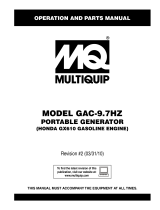 MQ Multiquip GAC-9.7HZ User manual
MQ Multiquip GAC-9.7HZ User manual
-
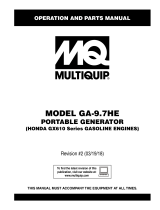 MQ Multiquip GA97HE Operating instructions
MQ Multiquip GA97HE Operating instructions
-
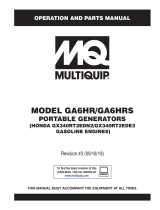 MQ Multiquip GA6HR-GA6HRS Operating instructions
MQ Multiquip GA6HR-GA6HRS Operating instructions
-
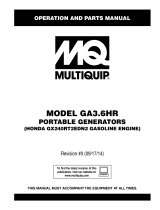 MQ Multiquip GA36HR Operating instructions
MQ Multiquip GA36HR Operating instructions
-
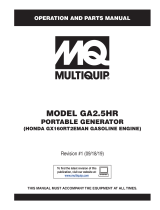 MQ Multiquip GA25HR Operating instructions
MQ Multiquip GA25HR Operating instructions
-
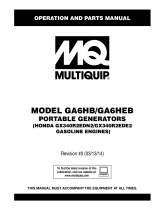 MQ Multiquip GA6HB-GA6HEB User manual
MQ Multiquip GA6HB-GA6HEB User manual
-
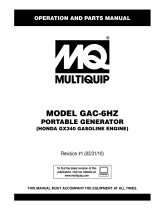 MQ Multiquip GAC-6HZ User manual
MQ Multiquip GAC-6HZ User manual
-
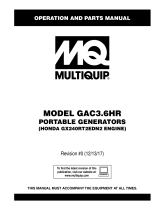 MQ Multiquip GAC3.6HR Operating instructions
MQ Multiquip GAC3.6HR Operating instructions
-
MQ Multiquip GA6HZR User manual
-
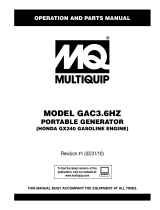 MQ Multiquip GAC-6HZ User manual
MQ Multiquip GAC-6HZ User manual
Other documents
-
CUMMINS PX3600 User manual
-
MQ Power DCA40SSKU4F Operating instructions
-
MQ Power NGA100SSPUL Operating instructions
-
MQ Power DCA40SSKU4F2 Operating instructions
-
Master Lock MGY5000 User manual
-
CAT 522-2700 User manual
-
MQ Power DCA70SSIU4F User manual
-
North Star 165950 User manual
-
CAT 502-3700 Operating instructions
-
MQ Power DCA400SSI4F3PD Operating instructions





































































